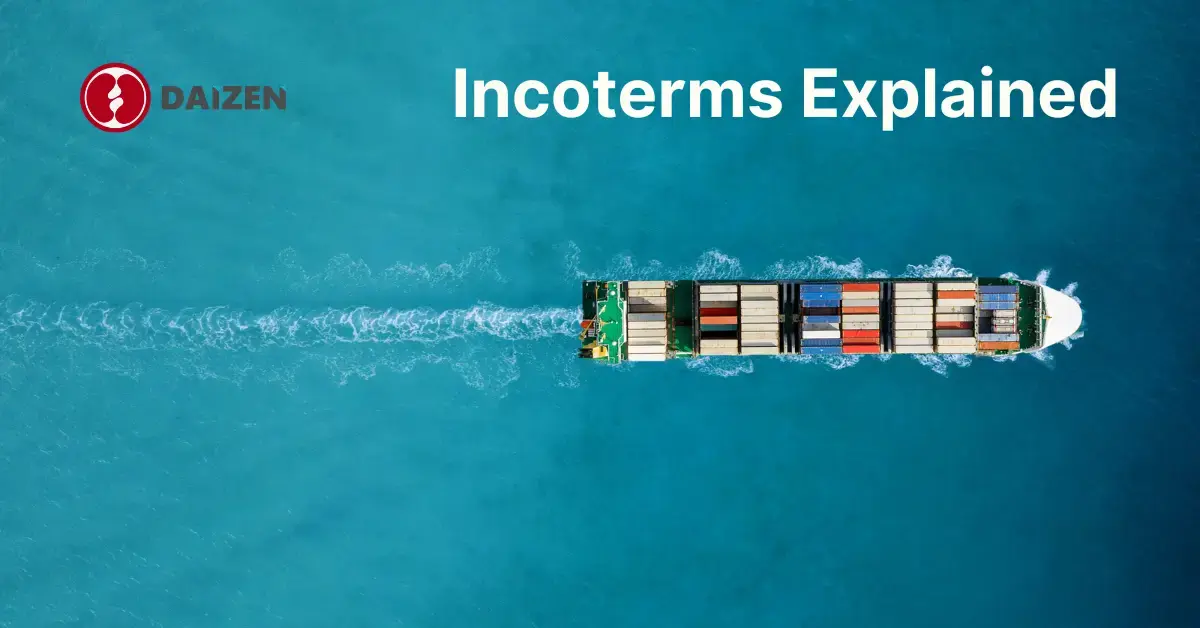What Are Incoterms?
Incoterms, short for International Commercial Terms, are a set of standardized rules published by the International Chamber of Commerce (ICC). These terms define the responsibilities of sellers and buyers in international trade transactions. Essentially, Incoterms provide clarity on who is responsible for the costs, risks, and tasks involved in the transportation and delivery of goods from the seller to the buyer.
By outlining the exact point at which the risk transfers from the seller to the buyer, Incoterms help prevent misunderstandings and disputes in global trade.
Why Are Incoterms Important?
In international trade, where goods cross borders, travel across oceans, and navigate complex regulatory landscapes, clear communication is critical. Incoterms offer a universal language that traders, shippers, and logistics providers can use to ensure everyone is on the same page.
Here’s why Incoterms are so important:
-
Risk Management: Incoterms specify when and where the risk shifts from the seller to the buyer. This clarity helps both parties understand their responsibilities and protect their interests.
-
Cost Allocation: Incoterms define who pays for what, from transportation costs to insurance and customs duties. This avoids unexpected expenses and ensures smoother transactions.
-
Legal Certainty: By adhering to standardized terms, companies reduce the likelihood of legal disputes. Incoterms are recognized globally and help companies navigate the complexities of international law.
-
Efficiency: With Incoterms, both parties know exactly what to expect, leading to more efficient negotiations and smoother execution of contracts.
The Evolution of Incoterms
Incoterms have evolved over time to keep pace with the changing landscape of global trade. Since their inception in 1936, Incoterms have undergone several revisions to reflect new practices and technologies in the shipping industry.
-
1936: The first set of Incoterms was introduced to address the confusion and disputes that arose from differing interpretations of trade terms.
-
1953-1990: The terms were revised multiple times to incorporate changes in transportation modes, such as the rise of container shipping.
-
2000: Significant updates were made to simplify the terms and adapt to the growing use of electronic communication.
-
2010: The number of terms was reduced from 13 to 11, reflecting modern trade practices. The terms were divided into two categories: those applicable to any mode of transport and those specific to sea and inland waterway transport.
-
2020: The latest version of Incoterms was released, with updates that reflect the increased focus on security, the use of third-party logistics, and a clearer distinction between “carriage paid to” (CPT) and “cost and freight” (CFR).
Incoterms Chart: Understanding the Different Terms

To navigate Incoterms effectively, it’s essential to understand the different terms and what they mean. Here’s a quick overview:
-
EXW (Ex Works): The seller makes the goods available at their premises. The buyer is responsible for all transportation costs and risks.
-
FCA (Free Carrier): The seller delivers the goods to a carrier or another person nominated by the buyer at the seller’s premises or another named place.
-
CPT (Carriage Paid To): The seller pays for the carriage of goods to the named destination, but the risk transfers to the buyer once the goods are handed to the first carrier.
-
CIP (Carriage and Insurance Paid To): Similar to CPT, but the seller also provides insurance coverage for the goods during transit.
-
DAP (Delivered at Place): The seller bears all costs and risks to deliver the goods to the named place, excluding import duties.
-
DPU (Delivered at Place Unloaded): The seller is responsible for all costs and risks involved in bringing the goods to and unloading them at the named destination.
-
DDP (Delivered Duty Paid): The seller is responsible for delivering the goods to the named place, including paying all duties and taxes.
-
FAS (Free Alongside Ship): The seller delivers the goods alongside the ship at the named port. The buyer assumes all costs and risks from that point onwards.
-
FOB (Free on Board): The seller delivers the goods on board the ship. Risk transfers to the buyer once the goods are on board.
-
CFR (Cost and Freight): The seller pays the costs and freight to bring the goods to the port of destination. Risk transfers to the buyer once the goods are on board.
-
CIF (Cost, Insurance, and Freight): Similar to CFR, but the seller also pays for insurance to cover the buyer’s risk of loss or damage during transit.





Post a comment